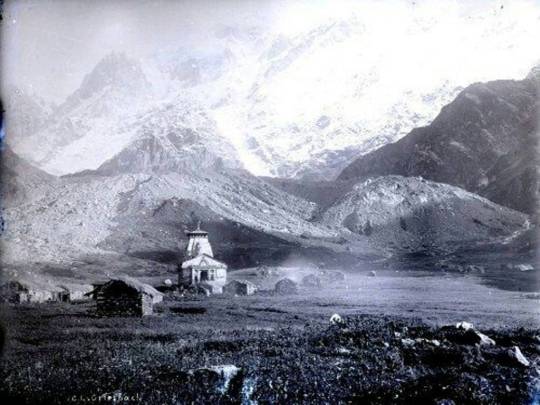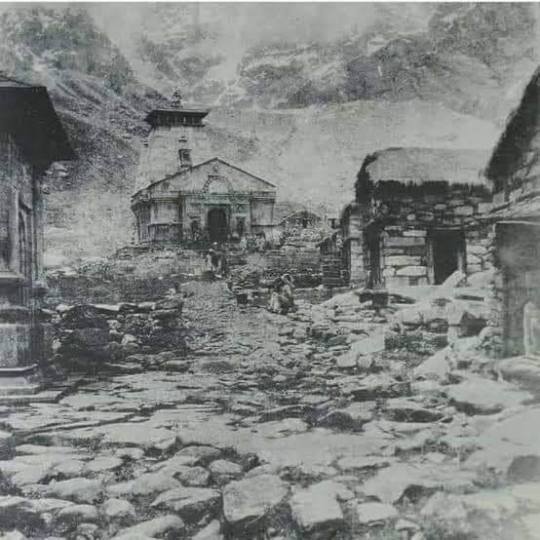#The doors of the Kedarnath Temple will be closed for winter from November 16
Explore tagged Tumblr posts
Text
Chardham in Uttarakhand: Kedarnath temple doors closed for winter from this morning, 1.35 lakh devotees visited this year
Chardham in Uttarakhand: Kedarnath temple doors closed for winter from this morning, 1.35 lakh devotees visited this year

Hindi news
The mantra of life
Dharm
Doors of Kedarnath Shrine will be closed for winter from November 16, Uttarakhand Chardham Temple Board, Uttarakhand Chardham, Badrinath Dham
Tired of ads? Install the Daily Bhaskar app for ad-free news
21 minutes ago
Copy the link
The weather at Kedarnath Dham changes adversely during winters. Due to this the doors of the temple were closed.
Kedarna…
View On WordPress
#aaj tak news#Badrinath Dham#Breaking News#Chardham#Chardham of Uttarakhand#closed#devotees#doors#Headlines Today#Kedarnath#lakh#Latest Headline#modi news#morning#news today#Temple#The doors of the Kedarnath Temple will be closed for winter from November 16#uttarakhanad chardham devsthanam board#Uttarakhand#visited#winter#year
0 notes
Text
Ancient Kedarnath
Kedarnath temple is one of the sacred pilgrimage centre in Northern India, located on the bank of Mandakini river at an altitude of 3584 meters above sea level. The historical name of this region is "Kedar Khand". Kedarnath temple is a part of Char Dhams and Panch Kedar in Uttarakhand and one of the 12 Jyotirlingas of Lord Shiva in India.

Overview
There are more than 200 shrines dedicated to Lord Shiva in Chamoli district of Uttarakhand itself, the most important one is Kedarnath. According to legend, the Pandavas after having won over the Kauravas in the Kurukshetra war, felt guilty of having killed their own Kith and Kin and sought blessings of Lord Shiva for redemption. He eluded them repeatedly and while fleeing took refuge at Kedarnath in the form of a bafellow.
On being followed, the Lord dived into the ground, leaving his hump on the surface at Kedarnath. The remaining portions of Lord Shiva appeared at four other places and are worshipped there as his manifestations. The arms of the Lord appeared at Tungnath, the face at Rudranath, the belly at Madmaheshwar and his locks (hair) with head at Kalpeshwar. The Kedarnath and four above mentioned shrines are treated as Panch Kedar (Panch means Five in Sanskrit).
The Temple at Kedarnath presents an imposing sight, standing in middle of a wide plateau surrounded by lofty snow covered peaks. The temple was originally built in 8th century A.D. by Jagad Guru Adi Shankaracharya and stands adjacent to site of an even earlier temple built by the Pandavas. The inner walls of the assembly hall are decorated with figures of various deities and scenes from mythology. Outside the temple door a large statue of the Nandi Bafellow stands as guard.
Dedicated to Lord Shiva, the Kedarnath temple has exquisite architecture Built of extremely large, heavy and evenly cut grey slabs of stones, it evokes wonder as to how these heavy slabs were moved and handled in the earlier centuries. The temple has a Garbha Griha for worship and a Mandap, apt for assemblies of pilgrims and visitors. A conical rock formation inside the temple is worshipped as Lord Shiva in his Sadashiva form.
History
In Hindu tradition, it is believed that Lord Shiva manifested in form of Jyotirlingam or the cosmic light. There are 12 such Jyotirlingas and Kedarnath is highest among them. This magnificent temple is ancient and constructed over a thousand years ago by Jagad Guru Adi Shankaracharya. It is located in the Rudra Himalaya range of Uttarakhand State. It is situated at an altitude of 3,581 mt & it is a 16 km trek from the nearest place of Gaurikund.
The Kedarnath temple is built of massive stone slabs over a large rectangular platform. The temple is ascended through large grey Steps which leads to the Holy Sanctums. We can find inscriptions in Pali language on the steps. The inner walls of the temple sanctum are adorned with figures of various deities and scenes from mythology.
The origin of Kedarnath temple can be traced to the great epic - Mahabharata. According to legends, after winning the battle of Mahabharata against the Gauravas, the Pandavas sought blessings of Lord Shiva to atone their sins of Killing men during the war. Lord Shiva eluded them repeatedly and while fleeing from them took refuge at Kedarnath in form of a bafellow. On being followed by the Pandavas, he dived into ground at the exact place where the Holy Sanctum is now present, leaving behind his hump on the floor surface, which is now visible. This Hump inside the temple is in the form of a conical rock formation and is worshipped as Lord Shiva manifested in his Sadashiva form. The Pujas and Archanas are performed on this manifestation by priests and piligrims. There is also a Holy Statue of Lod Shiva inside the temple, which is the portable manifestation (Utsavar) of the Lord.
Outside the temple door, a large statue of Nandi bafellow stands as guard. The temple, has been continually renovated over the centuries.
Kedarnath experiences very heavy Snowfall in Winter (upto several metres) and the temple itself is blanketed with snow from Novemner to April. So, at the onset of Winter every year, which is normally in the First week of November and on an auspicious date which is announced in advance by UCDDMB, the holy symbolic statue of Lord Shiva is carried down from Kedarnath temple to a place called Ukhimath, where it is worshipped as Lord Shiva. The pujas and archanas are done at Ukhimath from November till May of next year. In the first week of May and on an auspicious date which is announced in advance by UCDDMB, the symbolic statue of Lord Shiva is carried back from Ukhimath to Kedarnath and reinstated in the original place. It is at this time, that the doors of the temple are thrown open to pilgrims, who flock from all parts of India, for a holy pilgrimage. The shrine generally closes on the first day of Kartik (Oct-Nov) and reopens in Vaishakh (Apr-May) every year.

Kedarnath Temple in 1882






How to Reach ?

Neel Sunder Jalan
#Kedarnath#Char Dham Yatra#Himalayas#Pilgrimage#Panch Kedar#Trekking#History#Ancient#Spirituality#Positivity#Uttarakhand
2 notes
·
View notes